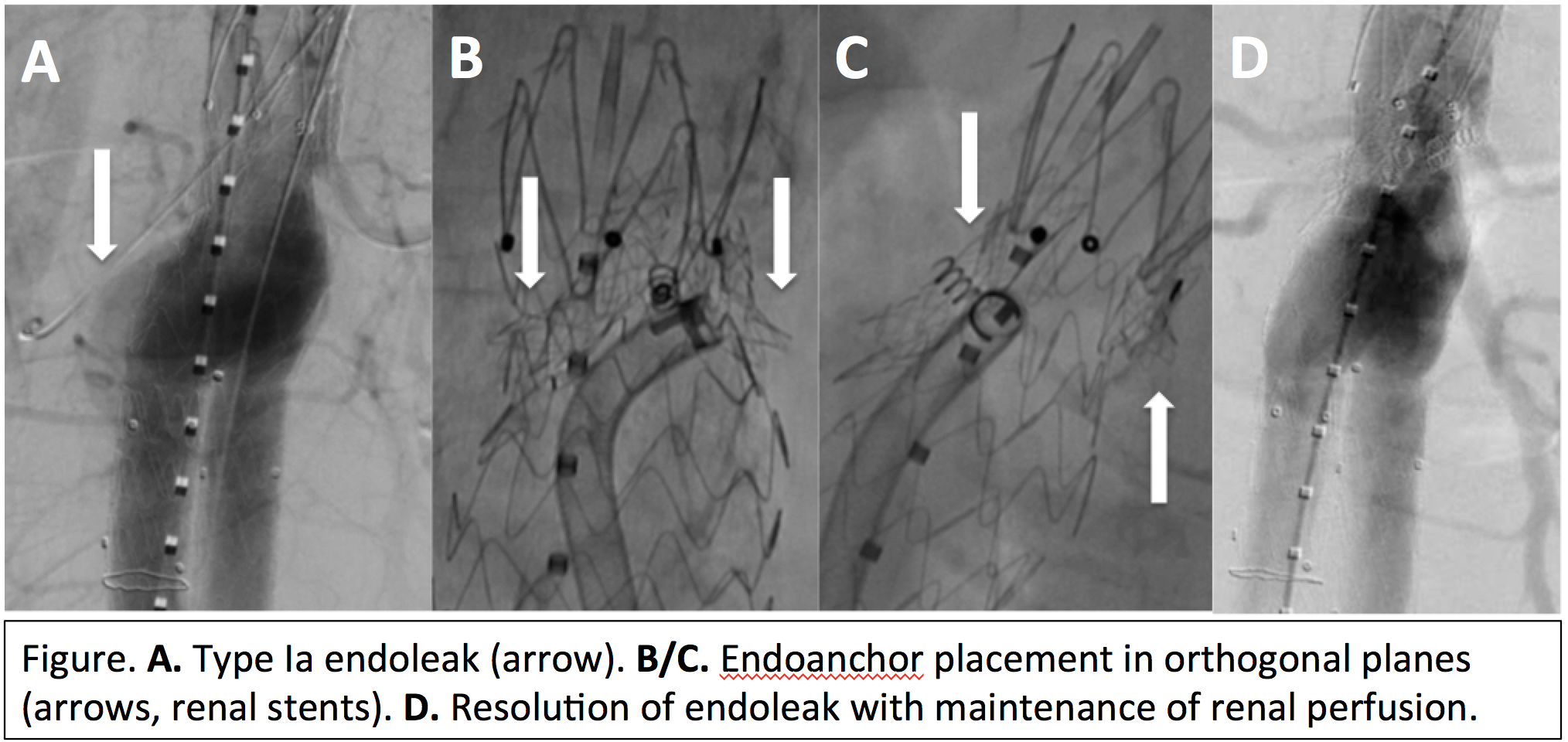Successful Treatment of a Persistent Type Ia Endoleak with Endoanchors Following Chimney Endovascular Aortic Repair
Clayton J. Brinster, MD, Davis Moon, MD, Hernan Bazan, MD, Taylor Smith, MD, Charles Leithead, MD, W C. Sternbergh, MD.
Ochsner Clinic Foundation, New Orleans, LA, USA.
DEMOGRAPHICS: A 77 year-old woman with a history of multiple abdominal surgeries and COPD requiring nocturnal oxygen presented with expansion of a juxtarenal AAA from 48mm to 59mm over a ten month interval.
HISTORY: The patient's access vessels were prohibitively narrow for fenestrated EVAR and her cardiopulmonary status precluded open surgical repair. EVAR with concomitant parallel visceral, or chimney, stents (chEVAR) was planned to include proximal main body coverage of the pararenal aorta with stents to the right and left renal arteries, respectfully. The proximal aortic seal zone was 20mm in length and 21-22mm in diameter. A 28mm main body aortic device and two 5mm balloon expandable renal stents (from an axillary approach) were deployed to complete the repair. Completion angiogram demonstrated a type Ia endoleak that remained after simultaneous proximal aortic and renal artery angioplasty (Figure-A). CTA at one month demonstrated a persistent type Ia endoleak.
PLAN: Reintervention was planned to include Heli-FX EndoAnchor (AptusEndosystems, CA) fixation of the proximal aspect of the main body. Renal stent disruption was avoided utilizing a two-step process: the endograft was first engaged by the endoanchor deployment system, which was then viewed in orthogonal planes prior to anchor release (Figure-B/C). Five anchors were deployed in this fashion. Completion angiogram demonstrated resolution of the endoleak, preserved integrity of the renal stents, and normal target vessel perfusion (Figure-D). CTA at 12 months showed no type Ia endoleak, decreased AAA sac size, and bilateral renal stent patency.
DISCUSSION: Type Ia endoleak following chEVAR remains a clinical challenge. A variety of strategies, including glue or coil embolization or proximal aortic cuff extension with additional chimney stent placement, have been described in this situation, but none is reliably effective and each is potentially complex. We present a case of a significant, persistent type Ia endoleak after chEVAR that was successfully treated with endoanchor placement. A stepwise deployment process with orthogonal views was used to avoid parallel renal stent damage. While the use of endoanchors in this situation has not been described previously, their selective application may provide a valuable and less complex alternative to other treatment modalities. 
Back to 2019 Abstracts
